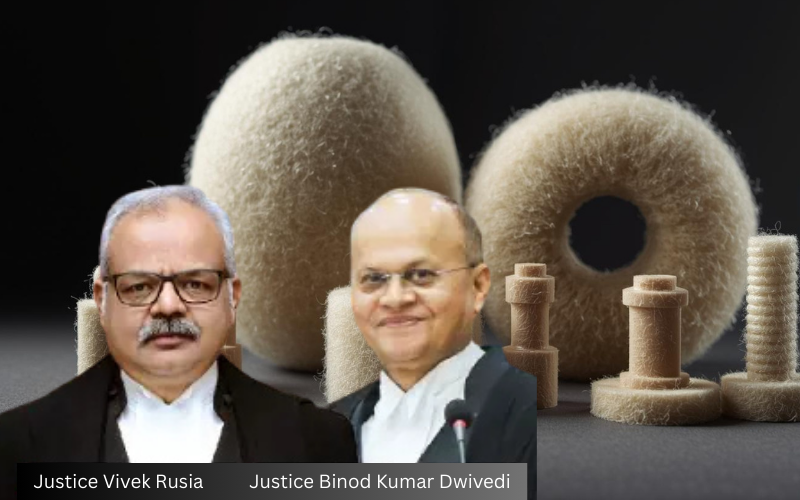Taxation - Woollen Felt Components used as machinery parts cannot be classified as 'Fabric'

Dissecting the Judgment on Woollen Felt as Machinery Parts vs. Fabric under the VAT Act, 2002
Madhya Pradesh High Court addressed the intricate issue of classifying Woollen Felt Components under the Madhya Pradesh Value Added Tax (VAT) Act, 2002. The appeals, filed by M/S Blue Chip Felt and others, revolved around whether these components should be classified as 'Fabric' or 'Machinery Parts' for taxation purposes.
Background of the Case:
The appellants, manufacturers of Felt Components used in various industries, challenged the classification under the MP VAT Act. They contended that the felt, being a textile structure, should be classified under 'Fabric' (Entry 34 of Schedule II Part II), attracting a lower VAT rate of 4%-5%. The respondents, representing the state, argued that the components function as machinery parts and fall under Schedule II Part IV Entry 1, which imposes a higher VAT rate of 12.5%-13%.
Key Legal Questions:
- 1. Whether the Woollen Felt Components should be classified under the 'Fabric' entry or as 'Machinery Parts.'
- 2. The applicability of the common parlance test in determining the classification.
- 3. The relevance of precedents, specifically the Porritts & Spencer case, in interpreting the VAT Act entries.
Court's Analysis and Decision:
The court, led by Justices Vivek Rusia and Binod Kumar Dwivedi, meticulously analyzed the nature and use of Woollen Felt Components. The judgment emphasized the following points:
1. Common Parlance Test: The court upheld the use of the common parlance or popular test, which assesses how goods are understood in the trade and by those who deal with them. Woollen Felt Components, primarily used as conveyor belts in the paper industry, were more aligned with machinery parts than fabrics.
2. Precedential Value: The court distinguished the present case from the Porritts & Spencer decision. Unlike the Punjab General Sales Tax Act, 1948, which had a broader entry for textiles, the MP VAT Act specifically enumerated items under 'Fabric,' none of which included industrial components like the Woollen Felt.
3. Specific vs. Residuary Entry: The court noted that the absence of a specific entry for Woollen Felt Components in the 'Fabric' category led to their appropriate classification under machinery parts. The principle of preferring specific entries over residuary ones was crucial in this determination.
Conclusion:
The Madhya Pradesh High Court's decision to classify Woollen Felt Components as machinery parts underscores the importance of understanding product usage and market perception in tax classifications. This judgment not only clarifies the VAT implications for manufacturers like M/S Blue Chip Felt but also sets a precedent for future cases involving similar classification disputes.
Through this case, the court reiterates the necessity of aligning tax statutes with commercial realities, ensuring that legal interpretations remain relevant and equitable. This decision is a pivotal reference for businesses and legal practitioners navigating the complexities of tax law in India.
M/S Blue Chip Felt v. Commercial Tax, (Madhya Pradesh) : Law Finder Doc id # 2762812
Trending News

Conviction under the POCSO Act - Sentence suspended consider in a consensual love relationship

A civil dispute arising from a commercial transaction does not constitute a criminal offence of cheating

Manipur violence: SC asks why entire leaked clips not sent for forensic test
